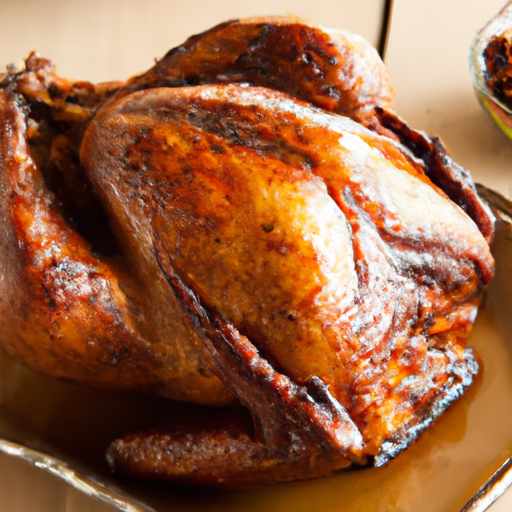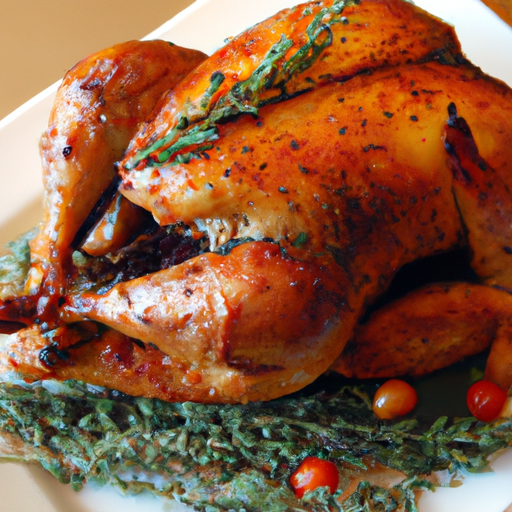In need of some expert advice on cooking the perfect turkey? Look no further! “Delicious Turkey Cooking Tips” is here to provide you with all the essential information to make your Thanksgiving feast an absolute success. From determining the ideal cooking times for your turkey to learning key techniques for achieving that mouthwatering flavor, this comprehensive guide is your go-to resource for creating a deliciously tender and perfectly cooked turkey every time. Say goodbye to dry, overcooked turkeys, and get ready to impress your friends and family with your newfound culinary skills.

Delicious Turkey Cooking Tips
Welcome, turkey enthusiasts! If you’re looking to elevate your turkey cooking game and impress your friends and family with a mouthwatering dish, you’ve come to the right place. In this comprehensive article, we’ll guide you through every step of the process, from selecting the right turkey to mastering the art of carving. So grab your apron, sharpen those knives, and let’s get started!
Selecting the Right Turkey
The first step to a deliciously roasted turkey is selecting the right bird. When choosing your turkey, keep in mind the number of guests you’ll be serving. As a general rule of thumb, estimate about 1 to 1 ½ pounds of turkey per person. If you’re planning on having leftovers, you might want to lean towards the higher end.
When it comes to turkey options, you can choose from fresh or frozen. Fresh turkeys tend to have a superior flavor and texture compared to frozen ones. However, frozen turkeys offer the advantage of being readily available and can be purchased well in advance. Whichever you choose, make sure the turkey is plump, with no signs of discoloration or strong odors.
Brining Tips
If you’re looking to take your turkey to the next level of juiciness and flavor, brining is the way to go. Brining involves soaking the turkey in a saltwater mixture, which helps to retain moisture and infuse delicious flavors deep into the meat.
To start the brining process, dissolve salt and sugar in warm water, ensuring the mixture is well-dissolved before adding it to a large container or brining bag. Submerge the turkey in the brine, making sure it is fully covered, and refrigerate for the recommended time according to the turkey’s weight. Once the brining time is up, rinse the turkey with cold water to remove any excess salt and pat it dry with paper towels.
Seasoning and Flavoring
Before roasting your turkey, it’s crucial to season it with flavorful herbs and spices to enhance its taste. A classic combination includes thyme, sage, rosemary, salt, and pepper, but feel free to experiment with your favorite seasonings.
To season the turkey, gently loosen the skin from the breast and rub the herb mixture directly onto the meat. Be generous with the seasoning, as some will be lost during the cooking process. Additionally, you can enhance the flavors by placing aromatics such as onion, garlic, and citrus slices inside the turkey cavity. These will infuse the meat with delightful fragrances as it roasts.

Cooking Methods
When it comes to cooking your turkey, you have several options to choose from. The most common methods are roasting and grilling.
Roasting is the classic choice, producing a beautifully browned bird with tender meat. Preheat your oven to the recommended temperature, usually around 325°F (163°C), and place the turkey on a rack in a roasting pan. Cover the turkey with foil and roast for the calculated time according to its weight, removing the foil during the last hour to allow for browning.
Grilling is a fantastic alternative that adds a smoky flavor to your turkey. Set up your grill for indirect heat and maintain a temperature around 325°F (163°C). Place the turkey on the grill and cook it with the lid closed, periodically brushing it with oil or butter to prevent drying. Keep a close eye on the internal temperature to ensure it reaches the safe minimum.
Thawing the Turkey
If you’re working with a frozen turkey, proper thawing is essential to achieve even cooking. The safest way to thaw a turkey is in the refrigerator, allowing for a slow and controlled thawing process.
Place the wrapped turkey on a tray or in a large dish to catch any potential drips and ensure your refrigerator’s temperature is set around 40°F (4°C). Estimate approximately 24 hours of thawing time for every 4 to 5 pounds of turkey weight. Remember to plan ahead and allot enough time for thawing to avoid any last-minute emergencies.
Preparation Tips
Before placing your turkey in the oven or on the grill, there are a few crucial preparation steps to ensure a delicious outcome. Firstly, make sure to remove the giblets and neck from the cavity of the turkey. These are often packed inside the bird and should be discarded or used for other purposes, such as making flavorful gravy.
Next, truss the turkey to promote even cooking. Trussing involves tying the turkey’s legs together and securing the wings against the body using kitchen twine. This helps to maintain the shape of the bird and prevent the extremities from overcooking.
Basting Techniques
Basting your turkey throughout the cooking process is an excellent way to add moisture and enhance the flavor of the bird. Basting involves spooning the pan drippings or a flavorful liquid, such as stock or wine, over the turkey’s skin at regular intervals.
To achieve the best results, baste the turkey every 30 minutes, using a baster or a spoon. Be cautious when opening the oven or grill to avoid significant temperature drops. Basting not only improves taste but also helps the skin to crisp up and turn a beautiful golden color.
Internal Temperature
To ensure your turkey is properly cooked and safe to eat, it’s crucial to monitor its internal temperature. The turkey should reach a minimum internal temperature of 165°F (74°C) in the thickest part of the thigh. To avoid drying out the breast meat, remove the turkey from the heat source when the breast reaches a slightly lower temperature, around 160°F (71°C), as it will continue to cook as it rests.
Invest in a reliable meat thermometer and insert it into the turkey, taking care not to touch the bone. Take multiple readings from different areas to ensure accuracy. Remember, cooking times may vary depending on the cooking method and the size of the bird, so adjust accordingly.
Resting and Carving
Once your turkey has reached the recommended internal temperature, it’s time to let it rest before carving. Resting allows the juices to redistribute throughout the meat, resulting in a juicier and more flavorful bird.
Tent the cooked turkey loosely with aluminum foil and let it rest for 20 to 30 minutes. This also gives you some extra time to finish up any last-minute side dishes or prepare the dining table. When it’s time to carve, start by removing the trussing string and begin slicing the turkey, making sure to follow the natural contours of the bird for beautiful and uniform pieces.
Leftover Turkey Tips
Now that you’ve enjoyed your deliciously roasted turkey, you might find yourself with some leftovers. Don’t worry; there are plenty of creative ways to make the most out of them!
Leftover turkey can be used in a variety of meals, such as turkey sandwiches, turkey pot pie, or even turkey soup. If you’re looking for a break from traditional recipes, you can also incorporate the turkey into salads or wraps for a quick and nutritious meal.
Remember to store your leftover turkey in airtight containers and refrigerate promptly. Consume within a few days or freeze for longer storage. The possibilities are endless, so get creative and savor the flavors of your turkey feast for days to come!
In conclusion, cooking a delicious turkey is a labor of love that requires careful attention to detail and a few expert tips and tricks. By selecting the right turkey, brining for juiciness, seasoning and flavoring to taste, and mastering various cooking methods, you’ll be well on your way to preparing a turkey feast to remember. Follow our thawing and preparation tips, baste your turkey regularly, and monitor its internal temperature for a perfectly cooked bird. After a well-deserved resting period, carve your masterpiece and delight in the flavors. And don’t forget to savor every bite of your leftover turkey, transforming it into new and exciting dishes. Happy cooking, and enjoy your mouthwatering turkey!
